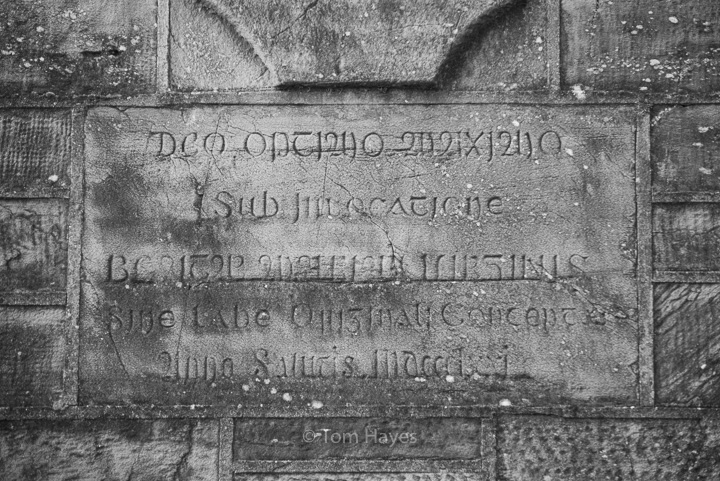The parish church of Enniskeane and Desertserges was the dream of Father Daniel Coveney who was parish priest in the parish from 1867 until his death in 1877. Fr Coveney grew up in Tracton Abbey Parish and studied for the priesthood at the Irish College in Rome. He was ordained there in 1839 so he returned to serve in Ireland as a priest in what was to be the most difficult time in Irish history — the Great Famine was about to unfold its devastation on the land and its people.
When Fr. Coveney came to Enniskeane, the people went to Mass in a chapel which stood just north of Enniskeane on the right of the road going up to Gurteenroe. This chapel was probably built in the late 1700s and was by then in disrepair. Fr Coveney persuaded the then Duke of Devonshire to donate land for the new church. He donated 17 acres which were intended to accommodate the church, a presbytery, stable, and grazing for the priest’s horse. The Duke also contributed a generous donation of £250 towards the cost of the building.
Fr Coveney entrusted the design of the church to Richard Evans of Cork. Evan had just completed building a church for Crosshaven parish (near Fr. Coveney’s native parish). History doesn’t record who the builders were but, in all probability, it was built under the oversight of Evan by local labour. The stone was drawn by horse and cart from a “nearby quarry”.
On Sunday, May 7th, 1871, the foundation stone of the new church was laid and blessed by Bishop of Cork, Dr William Delany. This stone is on the external wall of the church — behind the altar.

The inscription on the stone is in Latin and it echoes two aspects of Fr Coveney’s life. His experience in Rome and his devotion to Our Lady. It reads:
Deo Optimo Maximo
Sub Invocatione
Beatae Mariae Virginis
Sine labe Oroiginali Conceptae
Anno Salutis MDCCCLXX!
it translates as:
“To the Great and Good God
Under the patronage of
the Blessed Virgin Mary
conceived without Original Sin,
in the Year of Salvation 1871”
The opening phrase “Deo Optimo Maximo” is found on inscriptions in many public buildings and churches across Rome — where Fr Coveney studied. It is often abbreviated as D.O.M.
Although the belief that Mary was sinless, or conceived with an immaculate soul, has been widely held since early Christian times, the doctrine was not dogmatically defined until 1854, by Pope Pius IX in his papal bull Ineffabilis Deus. Fr Coveney’s dedication to this teaching is enshrined in his decision to have built a special side altar in the church dedicated to Our Lady of the Immaculate Conception.
May we always cherish the blessings we have received from those who have been here before us. May we thank the Lord for his many blessings, too. May he reward with eternal life those who have been his faithful servants.

